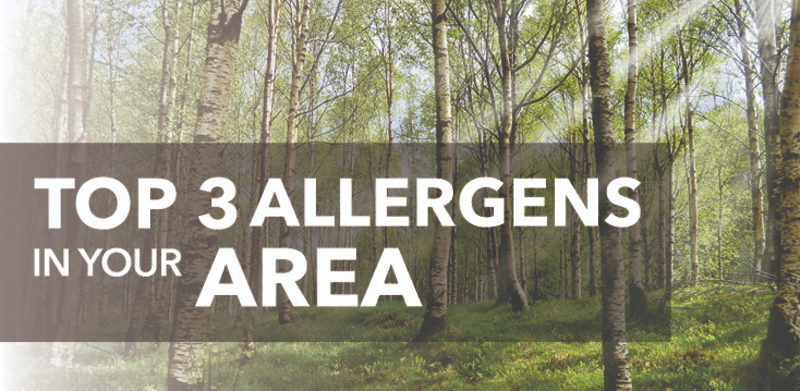Top 3 Allergens in Your Area

If you have seasonal allergies – which is true of 67 million Americans – your symptoms may flare up when pollen counts are high. But pollen isn’t the only outdoor allergen that makes you sneeze, cough, and blow your nose. Learn about the top three allergens in North America and where they are most prevalent.
Tree Pollen
Tree pollination starts off allergy season as early as February and continues until about June. In general, pollination begins in the south and moves north as the weather warms.
- In Western states, especially California, oak and walnut trees are the most problematic. Ash, cedar, and oak allergies prevail in the dry states of Arizona and New Mexico.
- The trees that trigger allergy symptoms the most in the Midwest include elder, alder, oak, birch, hickory, and elm.
- The worst offenders in Northeastern states include oak, pine, birch, hazelnut, maple, elm, poplar, red cedar, and hackberry.
- Oak, cedar, and pecan trees are the most problematic in Southern states.
- In Canada, British Columbia has the highest tree pollen counts.
Grass Pollen
In late spring or early summer, grasses starting sending out their pollen. Often someone who’s allergic to one type of grass is allergic to them all. Still, the duration of grass pollen season and the species you’re exposed to depend on where you live.
- Sweet vernal is a common grass in the West. Pollination season lasts from March to November.
- In the Midwest, brome grass starts pollinating in April, and allergies can last through the summer.
- Pollen from redtop and orchard grass in the Northeast picks up in May and June, sometimes lasting until August.
- The long growing season and warmer temperatures across the South mean that grass, especially Bermuda, can be problematic year round.
- With the colder climate in Canada, grass pollen doesn’t start up until August.
Ragweed
Ragweed and other weed pollens cause hay fever symptoms in the late summer and fall. The exact timing and type of weeds you need to watch out for vary by region.
- In the West, weed season starts as early as April and lasts until November. Pigweed and iodine bush are prevalent throughout all western states, while ragweed is a concern in Arizona and New Mexico.
- Midwestern states have some of the worst ragweed pollen counts in the US. The higher carbon dioxide levels here allow ragweed to thrive in July and August.
- Nettle and ragweed season in the Northeast begins in August and lasts until October.
- Ragweed and nettle send out pollen across the Southern states from late summer until the first hard freeze, if there is one.
- In Canada, August marks the start of weed season, and Ontario is known for having the most ragweed.
Check Your Local Pollen Count
Pollen.com has an interactive allergy forecast map that shows pollen count predictions and real-time information. Use this map to help time your outings and know when to stay indoors.
Improve Indoor Air Quality to Help Combat Allergies
Living with allergies requires you to take certain precautions if you want to decrease your symptoms. If you reside in a town with high local pollen counts, make an effort to limit your outdoor activities, keep the windows closed, and change your clothes when you come in from working outside. You can also use a high-efficiency AC filter and run an air purifier to remove allergens from the air.
The indoor air quality experts at Aire Serv® can help clean the air you breathe so you make it through allergy season with fewer annoying symptoms. Contact us today to learn more about our IAQ services.
 Click to call
Click to call


